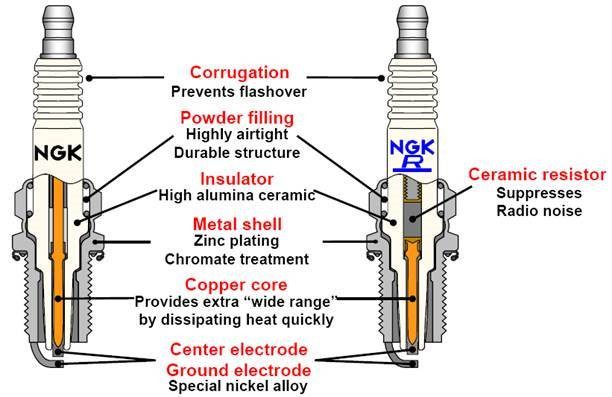How to Check If Your Yamaha Outboard Motor Spark Plugs Needs Replacement
05/06/2024Spark plugs ignite the air-fuel mixture in the engine's combustion chamber. This ignition process is essential for engine start-up and smooth operation. Over time, spark plugs can wear out or become damaged, leading to engine performance issues.
Keeping your Yamaha outboard motor in top condition requires regular maintenance, including checking and replacing the spark plugs. Spark plugs play a critical role in the ignition system, and their condition can significantly impact engine performance. Here’s how to determine if a spark plug needs replacing and what signs of damage to look for.
Steps to Checking Your Spark Plugs
Ensure the engine is off and cooled down.
Gather the necessary tools- a spark plug socket, ratchet, and a gap gauge.
Wear safety gloves and glasses for protection.
Remove the Spark Plugs
Disconnect the battery to prevent accidental starts.
Remove the spark plug wire by gently twisting and pulling it off the plug.
Use the spark plug socket and ratchet to remove the spark plug.
Visually inspect the spark plug for signs of wear and damage.
Use the gap gauge to check the electrode gap, which should match the manufacturer’s specifications.
Signs of Spark Plug Damage
Carbon Fouling- Carbon build up is a black, dry, and sooty, which will appear on the electrode.
The cause of Carbon fouling is the motor running too rich (too much fuel), or frequent short trips.
To resolve this replace the spark plug, check the air flow is not obscured, ensure proper fuel mixture, and high-quality fresh fuel is used.
Oil Fouling- Oil on you sparkplugs will make them appear as a wet oily deposit on the electrode.
Oil leaking into the combustion chamber or past the valve seals are the cause of this issue.
Replace the spark plugs and investigate the source of the oil leak.
Overheating- Over heated spark plugs appear white, blistered, or burnt on the electrode and insulator.
This can occur when the engine is running too hot, the incorrect spark plug heat range has been used, the motor is running to lean of an air-fuel mixture or the incorrect fuel octane rating has been used in the motor.
To rectify this replace the spark plug, check the engine cooling system, and adjust the air-fuel mixture on carburettor models.
Wear and Tear- Typically appears as rounded or worn electrode edges.
Natural wear from extended use.
Regular replacement of the spark plug at servicing intervals prevents this.
Pre-Ignition Damage- Appears as melted or damaged electrodes.
Spark plug firing too early, often due to incorrect ignition timing or using the wrong fuel octane rating.
Resolving this involves replacing the spark plugs and ensure proper ignition timing and fuel type as per the manufacturer’s specifications.
Deposits- Appear as an accumulation of ash residue on the electrode.
This is caused by additives in low-quality fuel or oil.
The solution is to replace the spark plug and use higher-quality fuel or oil.
Mechanical Damage- Typically is evident as a cracked insulator or damaged electrode.
The cause of which is physical impact or improper installation.
Replace the spark plug and ensure correct installation procedures are followed to prevent this from happening.

When to Replace Spark Plugs
Routine Replacement should happen every 100 hours of operation.
When performance issues occur, such as difficulty starting the engine, poor fuel efficiency, misfiring, or rough idling.
Regularly inspecting and replacing spark plugs is essential for maintaining the performance and efficiency of your Yamaha outboard motor. By identifying and addressing signs of damage early, you can prevent more significant engine issues and ensure smooth, reliable operation. Always refer to your Yamaha service manual for specific guidelines and specifications for your outboard model. Maintaining your spark plugs keeps your Yamaha outboard motor running at its best, providing you with a dependable and enjoyable boating experience. This guide helps you understand how to check and identify when your Yamaha outboard motor's spark plugs need replacement, ensuring your engine remains in optimal condition.
